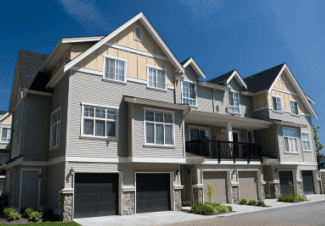Housing flipping: It’s riskier but more lucrative

Higher home prices are making house flipping harder, but more lucrative.
Flipping, which is generally defined as buying and selling a home in the same calendar year, was popular during the housing boom, when investors could get easy mortgage financing. Now investors need cash, and as lower-priced, distressed homes dry up, they need more cash.
Home flips made up just 4.5 percent of sales in the second quarter of this year, according to RealtyTrac, down from 4.9 percent a year ago. Flipping returns, however, the gross return on investment, increased to nearly 36 percent, up from 24 percent one year ago.
“Despite the rise in flipping returns in the second quarter, home flippers should proceed with caution in the next six to 12 months as home price appreciation slows and a possible interest rate increase could shrink the pool of prospective buyers for fix-and-flip homes,” said Daren Blomquist, vice president at RealtyTrac.
“While average flipping returns are up substantially from a year ago at the national level and in moderately priced markets such as Miami, Atlanta, Phoenix and Minneapolis, flipping returns are softening in some of the higher-priced markets such as San Francisco, Seattle, Denver and Los Angeles,” he said.
Nevada and Florida, where the share of distressed homes are still relatively high, are still seeing the most flipping action, but Chicago, Dayton and Baltimore offer some of the best gross returns.
In Washington, D.C., where home prices have flattened, flipping is still popular, but tricky.
“There has been a real sea change. You have to put a lot more work into the homes today,” said Christopher Harrison, a real estate investor who is flipping a home in Northwest D.C. “It’s interesting because when the market crashed you had a lot of investors making a ton of money on flips you didn’t even have to do work to.”
Harrison’s home is in a pricy neighborhood with desirable schools. He had to put about $400,000 into the property, which he purchased for about $700,000. He doubled the size of the 1,800-square-foot bungalow and listed it at the beginning of July at just over $1.5 million. He has now lowered the price by $54,000 and is considering doing more work to the property, possibly adding a parking space.
“We’ve gotten a lot of feedback, so we should have it sold soon,” said Harrison. “It just seemed like a really good investment.”
Flippers are now taking an average of almost six months to rehab their homes, which is an eight-year high, according to RealtyTrac. The higher-end renovations, however, may be adding to soaring profits at home remodeling retailers, like Home Depot and Lowe’s.
“The fewer foreclosure deals and longer flipping timelines that we see in the data demonstrate that flippers are getting squeezed on both sides of the profit equation,” said Blomquist. “Experienced flippers will often need to enter into higher-risk markets with less solid economic fundamentals to chase better yields.”
Flipping is not always profitable. Flips on the lowest-priced homes, below $50,000, saw negative returns in the second quarter. The sweet spot appears to be homes priced at $100,000 to $200,000, which yielded an average gross return of 44 percent.
Source: CNBC















 Accessibility
Accessibility